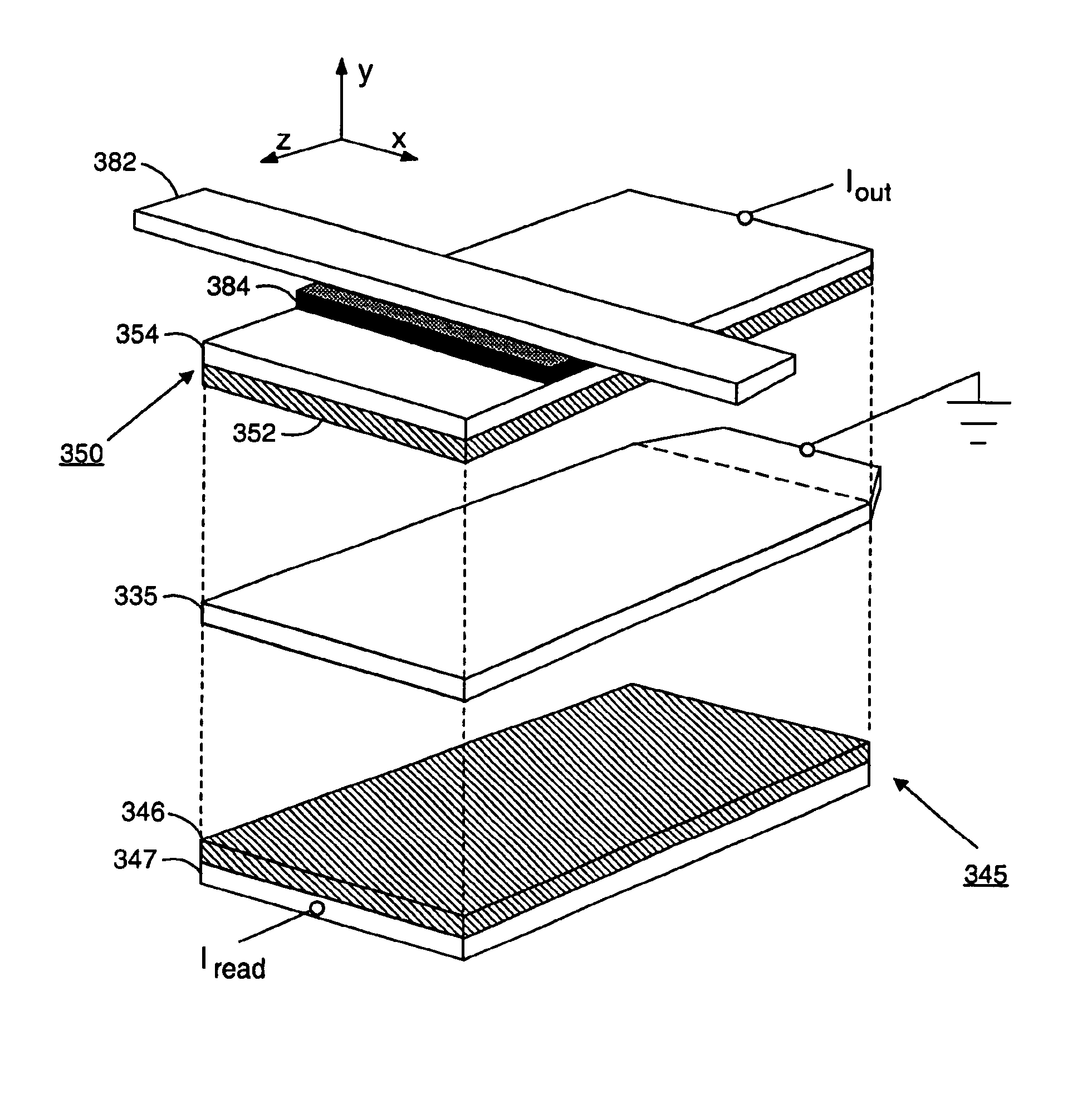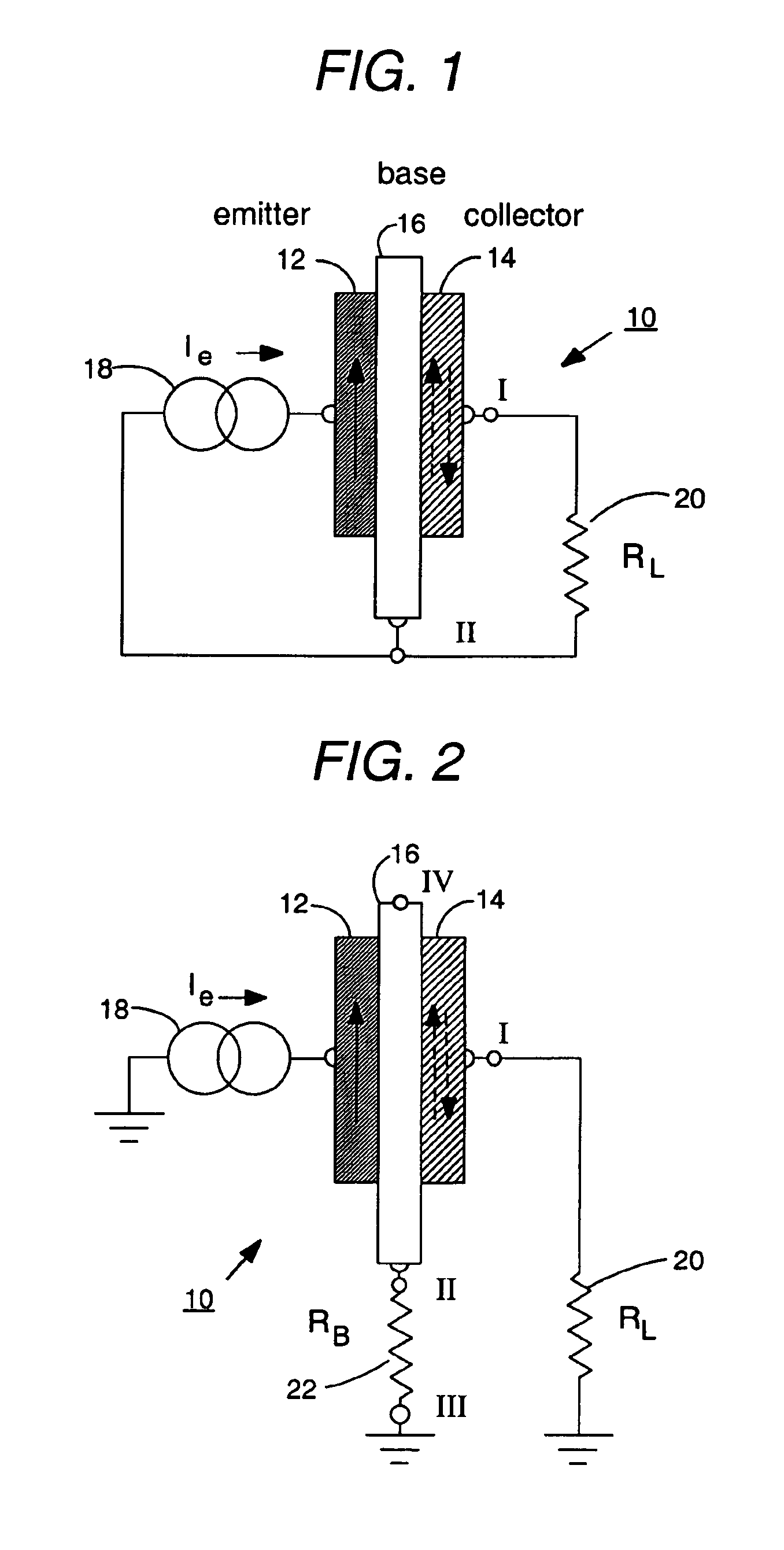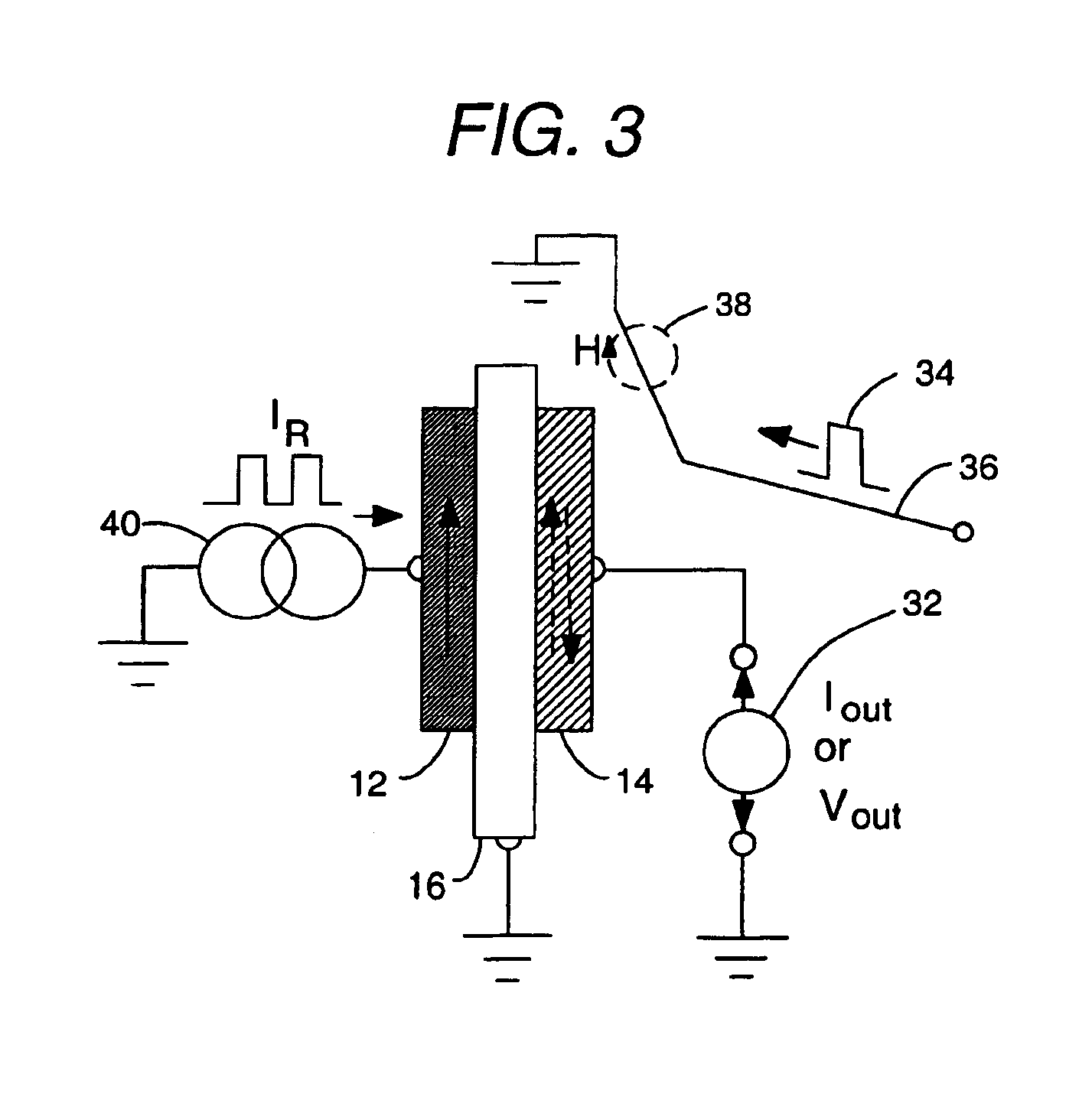Stacked hybrid semiconductor-magnetic spin based memory
a hybrid memory and semiconductor technology, applied in galvano-magnetic hall-effect devices, pulse techniques, instruments, etc., can solve the problems of inability to manufacture reliable cells on a submicron scale, the size of dram memory cells is not decreasing as rapidly, and the capacitors have not benefited from similar technological gains, etc., to achieve superior signal to noise readout characteristics and greater isolation
- Summary
- Abstract
- Description
- Claims
- Application Information
AI Technical Summary
Benefits of technology
Problems solved by technology
Method used
Image
Examples
first embodiment
of Hybrid Memory Cell with Magnetic Spin Transistor and Associated Fet
A first embodiment of a spin transistor hybrid memory cell 400 as it may be used in a memory array is shown schematically in FIG. 4. Write wires are not shown in the figure and write functions are performed in the same manner as described above. A description of the read operation now follows. The cell 400 is denoted by the dotted line surrounding the two circuit elements: a spin transistor 10 is the storage element and a FET 420 [a bjt could also be used] is hereafter referred to as a select transistor. A read pulse IR applied to the input terminal 402 provides the bias current for reading the state of the spin transistor, e.g. a positive output voltage [with respect to ground] representing a “1” or zero [or negative] voltage representing a “0” is developed at the collector 14 and delivered to the FET source 406. The enhancement mode FET 420 performs a cell select function in the same way as done in a typical con...
second embodiment
A second embodiment of a spin transistor hybrid memory cell 500 is shown schematically in FIG. 5. This embodiment is especially suitable for designs where the [electronic] ground plane of the chip is not constant over a large area and, it is therefore advantageous to provide a voltage reference from each cell. In addition, it might be desired to connect the common read line to a column of magnetic spin transistors in series rather than in parallel [i.e. connect the ground of one cell to the input of the next]. In this case it would be necessary to provide a reference [ground] for each cell.
When the ground plane is not constant it may be difficult to utilize a bipolar output. The bipolar output of the spin transistor can be easily offset, however, by manipulating parameters such as RB and the geometry of the device. For example, it is convenient to offset the output by choosing RB =RS so that the voltage output is 2* IR*RS for a “1” and 0 for a “0.” In this case ...
third embodiment
of Hybrid Memory Cell with Bipolar Output and Configurable Offset
A third embodiment of a spin transistor hybrid memory cell 600, conceptually very similar to the second, is presented in FIG. 6. If the ground plane is not constant over a large area of the chip but the use of a bipolar sense circuit is still desired, this third embodiment can be used. Here the reference voltage VR is taken from the base, at a location of the base that is remote from the base—collector interface and which is independent of the base resistance RB. This figure demonstrates that a variation of sample geometry, as well as selection of an appropriate value for RB, can be used to configure the offset voltage of the spin transistor. In the configuration schematically in FIG. 6, the offset [relative to the reference] is zero regardless of the value of RB, and the output voltage, with respect to this reference, is symmetrically bipolar. As before, a select transistor 620 isolates the collector 14 from the bit l...
PUM
| Property | Measurement | Unit |
|---|---|---|
| bias current | aaaaa | aaaaa |
| resistance | aaaaa | aaaaa |
| thickness | aaaaa | aaaaa |
Abstract
Description
Claims
Application Information
 Login to View More
Login to View More - R&D
- Intellectual Property
- Life Sciences
- Materials
- Tech Scout
- Unparalleled Data Quality
- Higher Quality Content
- 60% Fewer Hallucinations
Browse by: Latest US Patents, China's latest patents, Technical Efficacy Thesaurus, Application Domain, Technology Topic, Popular Technical Reports.
© 2025 PatSnap. All rights reserved.Legal|Privacy policy|Modern Slavery Act Transparency Statement|Sitemap|About US| Contact US: help@patsnap.com



